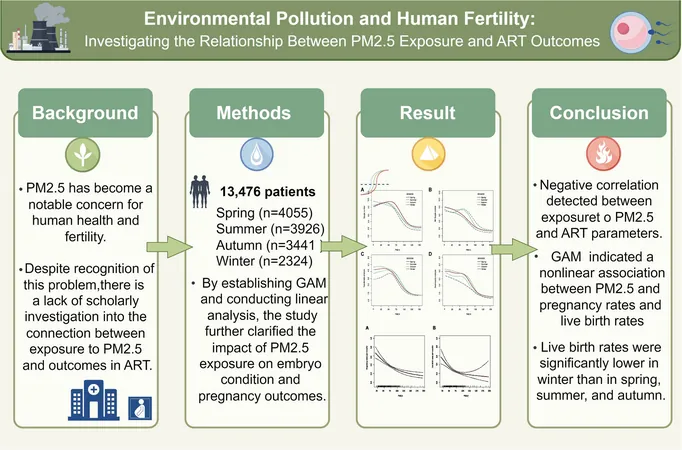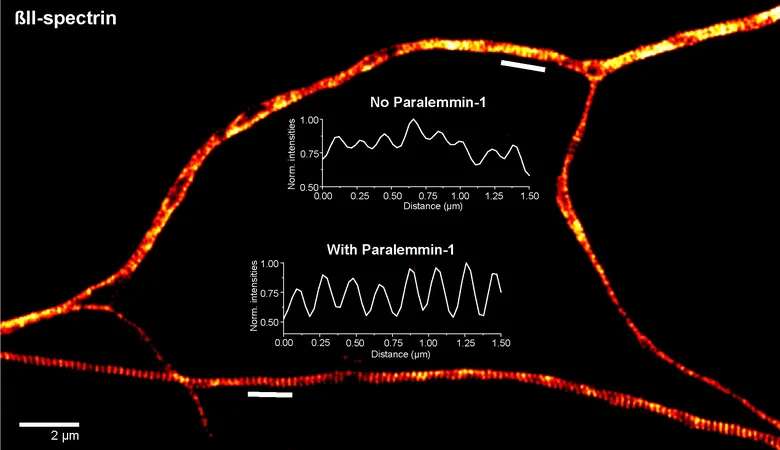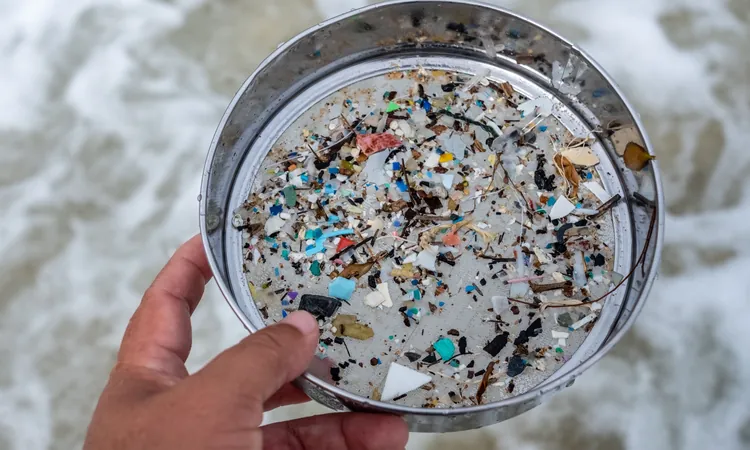
Shocking Link: How Air Pollution is Undermining Your Chances of Parenthood!
2025-04-11
Author: Jia
The Hidden Threat to Fertility: PM2.5 Pollution!
In a world grappling with rising pollution levels, did you know that your chances of conceiving could be at risk? Research reveals alarming connections between fine particulate matter (PM2.5) exposure and fertility outcomes, especially regarding Assisted Reproductive Technology (ART), a beacon of hope for couples facing infertility.
What’s the Connection?
Recent studies indicate that the toxicity of PM2.5 isn't just a respiratory concern; it may pose significant risks to reproductive health. Notably, research shows that higher PM2.5 exposure before oocyte retrieval can lead to a staggering 34% decline in live birth rates. Women exposed to elevated PM2.5 levels face increasing chances of infertility and complications during pregnancy.
Seasonal Surges: The PM2.5 Puzzle!
Perhaps even more intriguing is the role of seasonal fluctuations in air quality. This study conducted at a leading hospital in central China aimed to discern how seasonal variations of PM2.5 impact ART outcomes. Data from over 13,000 patients spanning four years showcased varying pregnancy success rates across the seasons.
What Did the Study Find?
The results were startling. Clinical pregnancy rates and live birth rates were notably lower in patients exposed to high PM2.5 levels, particularly during winter. Spring and summer saw higher successes, suggesting that the timing of treatment linked with air quality could be critical. While the cold months brought lower pregnancy rates, escalating PM2.5 concentrations were also observed at that time, mainly due to heating practices and poor weather conditions.
Are We Ignoring the Warning Signs?
We may think of air pollution as a distant problem, but evidence indicates it directly impacts reproductive success. This demands urgent attention from both clinicians and policymakers to address how environmental factors can influence fertility treatments. The study calls for raising awareness about limiting PM2.5 exposure before embarking on IVF procedures, ideally three months ahead.
A Call to Action!
As air quality plateaus, understanding the multifaceted effects of pollution on our health becomes increasingly vital. The findings beckon deeper investigations into the implications of PM2.5 and other pollutants on reproductive health, urging both individuals and health authorities to take proactive measures. If dreaming of a family feels further away than ever, consider the air you breathe! Let's tackle this hidden foe together.






 Brasil (PT)
Brasil (PT)
 Canada (EN)
Canada (EN)
 Chile (ES)
Chile (ES)
 Česko (CS)
Česko (CS)
 대한민국 (KO)
대한민국 (KO)
 España (ES)
España (ES)
 France (FR)
France (FR)
 Hong Kong (EN)
Hong Kong (EN)
 Italia (IT)
Italia (IT)
 日本 (JA)
日本 (JA)
 Magyarország (HU)
Magyarország (HU)
 Norge (NO)
Norge (NO)
 Polska (PL)
Polska (PL)
 Schweiz (DE)
Schweiz (DE)
 Singapore (EN)
Singapore (EN)
 Sverige (SV)
Sverige (SV)
 Suomi (FI)
Suomi (FI)
 Türkiye (TR)
Türkiye (TR)
 الإمارات العربية المتحدة (AR)
الإمارات العربية المتحدة (AR)